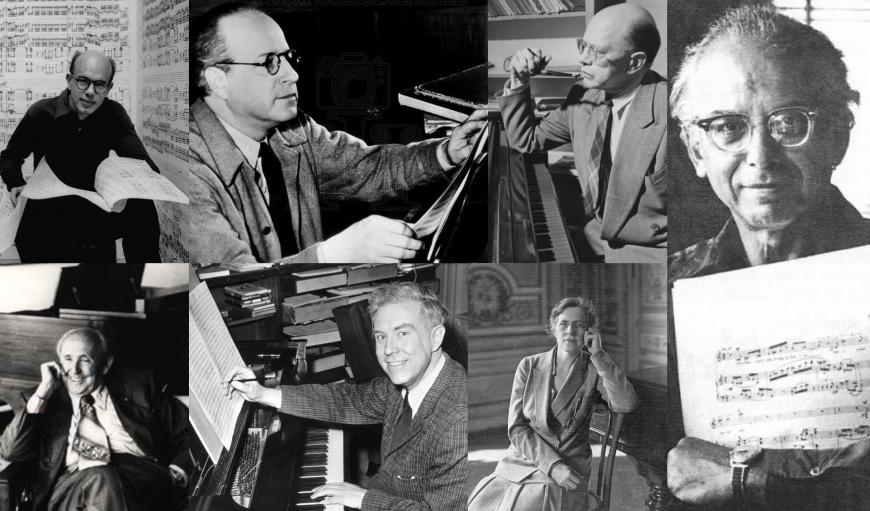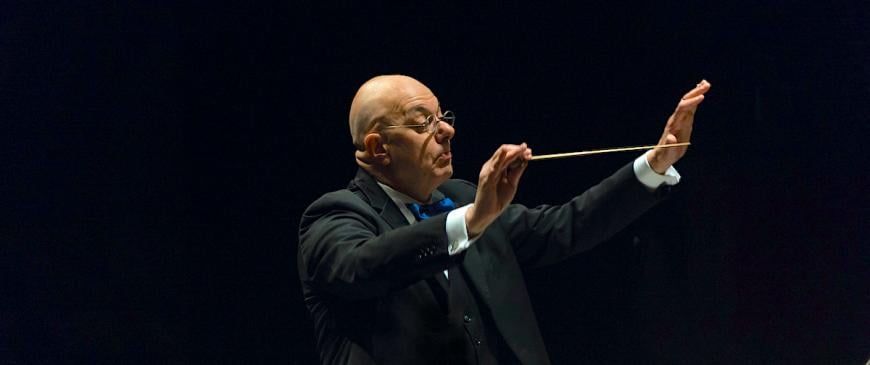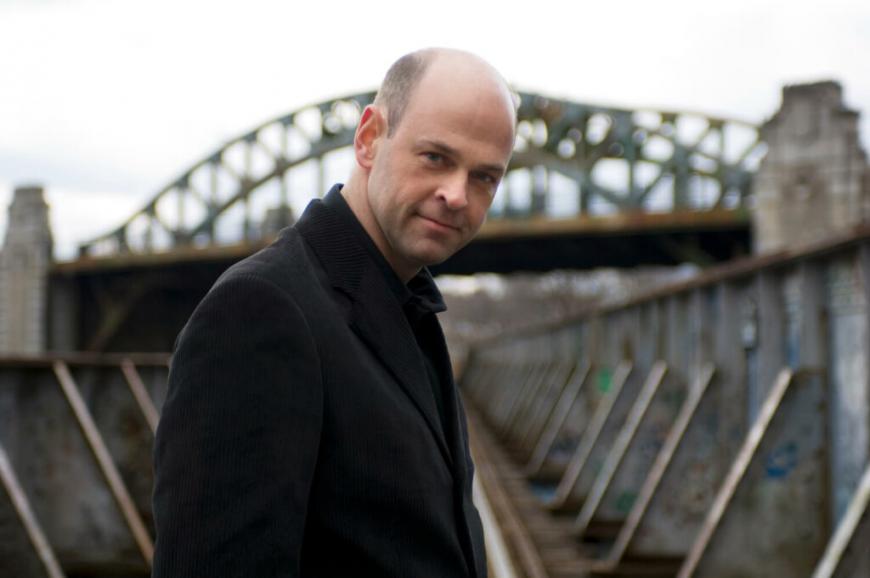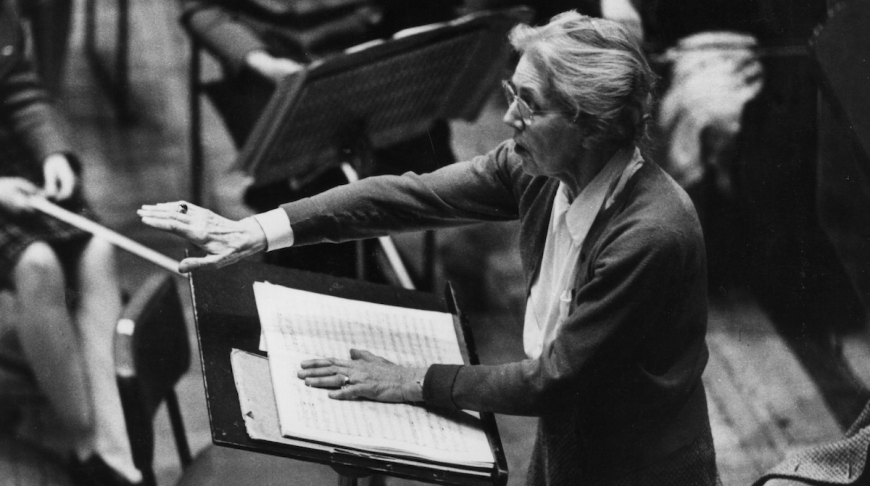
In the furniture and design world the phrase “midcentury modern” — coined by author and journalist Cara Greenberg in the 1980s — generally denotes a style at its height between 1933 and 1965. An echo of the 19th century’s Industrial Revolution and novel mass production techniques, it’s a period characterized by a refinement and simplicity of style, adding elements of elegance and craftsmanship into formerly barebones furniture concepts. In the 1980s and ’90s, this aesthetic began experiencing a renaissance, helped along by museum exhibitions and media and celebrity interest, and it remains an evergreen style of interior design to this day.
It goes without saying that music is not furniture, of course, and there isn’t a clear-cut midcentury modern period in American classical music. Quoth Leon Botstein, director of the Bard Music Festival, “The history of 20th-century American composition is a confused picture.” Nevertheless, composers from that same time period, say the ’30s to the ’60s — the likes of Walter Piston, Roy Harris, Elliott Carter, George Perle, Harold Shapero, Roger Sessions, and others neglected for decades by America’s musical institutions — have been experiencing an uptick in interest of late, particularly at summer festivals and in recording projects. The modernists are receiving top billing at the Aspen Music Festival and the Bard Music Festival as well as in numerous recent recording projects by the Boston Modern Orchestra Project.

Why the former neglect and why the renewed interest? Critics, conductors, and composers have their theories about the former, most of which split music from America’s modernist period into opposing aesthetic camps. As Alan Fletcher, a composer and CEO of the Aspen Music Festival opined in The Guardian in 2016, “The composer Ned Rorem declared that all American composers are either French or German in their mentality. I might suggest my own split-path contrast: among composers whose large-scale works are either more symphonic or more theatrical (or perhaps, narrative).” New York Times critic Anthony Tommasini in 2019 nodded to a binary as well: “On one side were those whose complex modernist languages involved various atonal and serial methods. On the other were self-described ‘postmodern’ composers, who experimented with minimalism and found common ground with rock, jazz, and ethnic music.”
Botstein proposes a similar dichotomy between a more popular “conservative” group of composers like Copland and Bernstein and Gershwin, who were and are comparably in vogue, and the more experimental modernists like Roger Sessions, Elliott Carter, and George Perle, more prone to serialism and more heavy dissonance. The obvious answer to why these latter artists are less known is that their music can be uncomfortable to listen to for audiences accustomed to regular doses of Beethoven and Brahms. But tastes change, and Botstein argues that it’s America’s larger musical institutions that have driven much of the midcentury repertoire underground. “We are ruining classical music by putting into storage the great works of our recent history,” he said. “It’s a form of artistic suicide. Nothing would do the Mahler symphonies greater justice than to be silent for a year.”
Botstein isn’t alone in his contention. Gil Rose, founder and conductor of the Boston Modern Orchestra Project (BMOP), called larger arts institutions “lazy.” “That’s probably a little too mean,” he clarified in a recent phone conversation. “I don’t mean that the individuals making the decisions are lazy at all, but that orchestras are generally more interested in playing the same thing well than they are in playing something different less than perfect.” Rose is deeply invested in recording and reviving America’s forgotten composers. He’s one of this country’s biggest proselytizers for music from the midcentury. “There’s an almost dirty word these days in composition: craft. ... Carter’s ballets have the same level of craft as Prokofiev’s,” he said. Uncomfortable though the music can be for some listeners, the skill and quality of the craftsmanship is undeniable. Tommasini has echoed this sentiment in his writing, allowing that midcentury composers at their best brought “well-honed skills, artistic integrity, and a touch of American feistiness to their music.”

Craft alone doesn’t necessarily equate to quality, however. Rose said he also looks for a sense of drama in selecting works, music that is constructed with narrative in mind. “I like pieces that are temporal and take you on some kind of journey, either in thematic development or some extramusical idea or story,” he said. He also cited an “orchestral sound” as a criterion for quality, or a composer’s ability to creatively use the full range of an orchestra’s timbral and dynamic possibilities. “What I really want is for a decent-sized audience to get affected by the pieces they’re listening to. It matters more what it says than what the language is.”
“There’s so much good music out there can excite an audience,” Botstein concurred. “The symphonies of Piston are very good, for example, they’re very strong, and they make a terrific impression. I would argue that the late Elliott Carter makes a wonderful impression on the contemporary audience if it stops wondering how it’s put together.”
The quality is there. The innate interest, not so much, but efforts by Botstein and Rose and Fletcher do seem to be bumping the needle, and Rose isn’t shy about claiming some of the credit due to his and his orchestra’s efforts. Next year’s post-pandemic programming may not be indicative of this change, as organizations may dig into the familiar and comfortable to pull listeners back into the physical concert hall. However, there is another factor at play at present. America’s institutions, musical and otherwise, are grappling with questions of equity, particularly racial equity, spurred by the enormous response to the 2020 police killing of George Floyd. Administrators have scrambled to program works by composers neglected for their gender identity or their race. “These things certainly are happening at the same time,” said Rose. “The motivation is different, though. One is a drive for a more equitable picture for what especially composition is really like. Our musical culture is much more kaleidoscopic than most people think.”

The 2021 Bard Music Festival (Aug. 6–15) will explore the music of Nadia Boulanger, whom Botstein called the most influential woman of 20th-century music as well as “the chief architect of all American music,” including those midcentury modernists. Recent albums by the Boston Modern Orchestra Project spotlight the likes of Perle, Carter, John Harbison, and others. There is no reason for America’s major orchestras not to explore such music other than that it is not familiar. But how can it become familiar unless it is programmed? “I could program 20 years of an orchestral season with entirely new work from this period,” Botstein said. “Some of this music can grab you on first hearing. I think what performers need to do is to bring out some of this repertoire and play with commitment. The most successful programs offer something new.” Even if that something new is, in fact, something midcentury.




